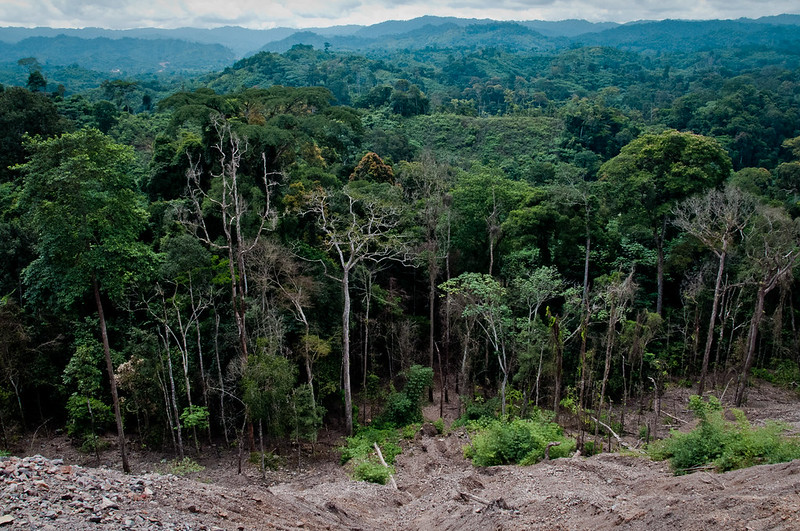Urmi Pattanayak and Milinda Mishra argue that regenerative finance is a promising solution to democratise capital, improve agricultural practices, and enhance economic resilience in various global initiatives.
By 2050, as the global population reaches 10 billion, we will require a significant transformation of the food system, necessitating an annual investment of $300 to $350 billion. According to Global Consultation Report of the Food and Land Use Coalition we are certain that that substantial investments around – $1.28 trillion are required for ensuring Healthy Diets, and $30 billion for Productive & Regenerative Agriculture. This significant financial requirement stems not solely from the need to increase food production, but from the need for holistic food system transformation. This is further exacerbated as 44% of the Earth’s habitable land is arable—with one-third designated for crops and the remaining two-thirds for grazing. So, in today’s world, we’re all searching for our version of Jack’s magic beans—something that gives us more than just a beanstalk to the sky. Therefore, this article explores how regenerative finance could be our ‘magic bean’ helping ‘Jacks’ harness its power to upscale initiatives like crop diversification, green fertilizers, silvopastoral techniques, and millet cultivation. While also greening the world one sprout at a time!
Regenerative Finance: Unlocking its potential.
In this context, regenerative finance can address systemic problems in food systems, fostering a just and green transition to sustainable practices. When integrated with agriculture, it adopts a holistic approach by equitably deploying capital, eliminating exploitative repayment terms and collateral requirements, and revising exclusionary credit standards. It involves stakeholders in decision-making, rebalancing economic control, and granting local communities sovereignty over their cultivation processes. In essence, it democratizes the opportunity to thrive, much like giving everyone a fair chance to grow their own beanstalk. This approach, has already been employed by some cryptocurrency projects to reduce carbon emissions, holds potential for application in notable agricultural initiatives worldwide.
- Uzbekistan’s Agricultural Shift: Recently Uzbekistan has diversified into high-value horticultural exports, which has grown from $570 million in 2017 to $1.2 billion in 2019, making the farming system more resilient to agro-climatic changes. As a result of which, today, private farmers growing horticultural goods are doing better than their counterparts who grow wheat or cotton and their revenues exceed costs by more than 50 percent for horticulture products.
- SMART Punjab Program, Pakistan: This initiative has supported 15 out of the 25 areas of reform of PUNJAB’s agriculture, including significant changes in the wheat marketing, produce markets, irrigation, and water conservation, it stimulates the agribusiness sector. It has assisted small-scale farmers in transitioning from wheat to more sustainable crops, promoted eco-friendlier fertilizers, such as phosphatic and potash, through e-vouchers, reduced the reliance on high-emission urea fertilizer and increased the uptake of greener alternatives.
- Silvopastoral Techniques in Colombia: In Colombia, farmers have planted 3.1 million trees and adopted silvopastoral systems that integrate trees and shrubs with pasture to enhance carbon sequestration, diversify food sources, and improve both productivity and resilience. As of today, around 32,000 hectares have been converted into silvopastoral systems, increasing incomes by up to $523 per hectare, per year, and boosting milk productivity by an average of 36.2%.
- Odisha Millet Mission, India: This initiative covers around 30 districts engaging around 228808 farmers to revitalize millet cultivation, which is culturally significant in tribal communities, nutritionally beneficial, drought-resistant, and suited to uneven terrain. The has proven successful in promoting advancing processing technologies, market development, and consumer awareness to increase demand for millets.
These discussed initiatives can even employ regenerative finance to upscale. However, they might face some significant challenges, such as:
Customization of Financial Products: Traditional financing does not always meet the diverse needs of projects like Uzbekistan’s shift towards diversified horticulture or the SMART Punjab Program. These initiatives often require longer-term investments before they become profitable, and face unique agricultural risks. Financial products developed under Regenerative Finance (ReFi) need to be specifically tailored to accommodate these characteristics, offering flexible repayment terms and risk mitigation strategies to support such transitions.
High Capital Requirements: Initiatives like the Silvopastoral systems in Colombia and the Odisha Millet Mission involve substantial initial investments. For instance, setting up silvopastoral systems or processing facilities for millets can be capital-intensive. ReFi can address this by leveraging blended finance solutions, where public funds reduce investment risks and catalyze private capital inflow.
Development of Efficient Supply Chains: Each of these initiatives requires a robust supply chain to ensure agricultural products reach the market efficiently. For example, the Odisha Millet Mission needs to increase millet production and develop processing technologies and market networks to handle the increased output. Effective coordination among farmers, processors, and retailers is crucial. ReFi can support these efforts by facilitating investments in supply chain infrastructure and fostering partnerships among stakeholders to ensure seamless operations from farm to market.
However, by addressing these challenges regenerative finance can significantly contribute to scaling sustainable agricultural practices worldwide, enhancing both environmental resilience and economic viability. However, for this to succeed, collaboration among stakeholders i.e. including financial service providers, private and public investors, policymakers, participants in the crop value chain, Agri-tech companies, and regulators, remains crucial. Only then can Jack reap the benefits of his ‘magic beans’.
The views expressed in this post are those of the author and do not reflect those of the International Development LSE blog or the London School of Economics and Political Science.
Featured image credit: “Medcaravan: Learning and Sharing Agroeocology. Via urgenci.net.




